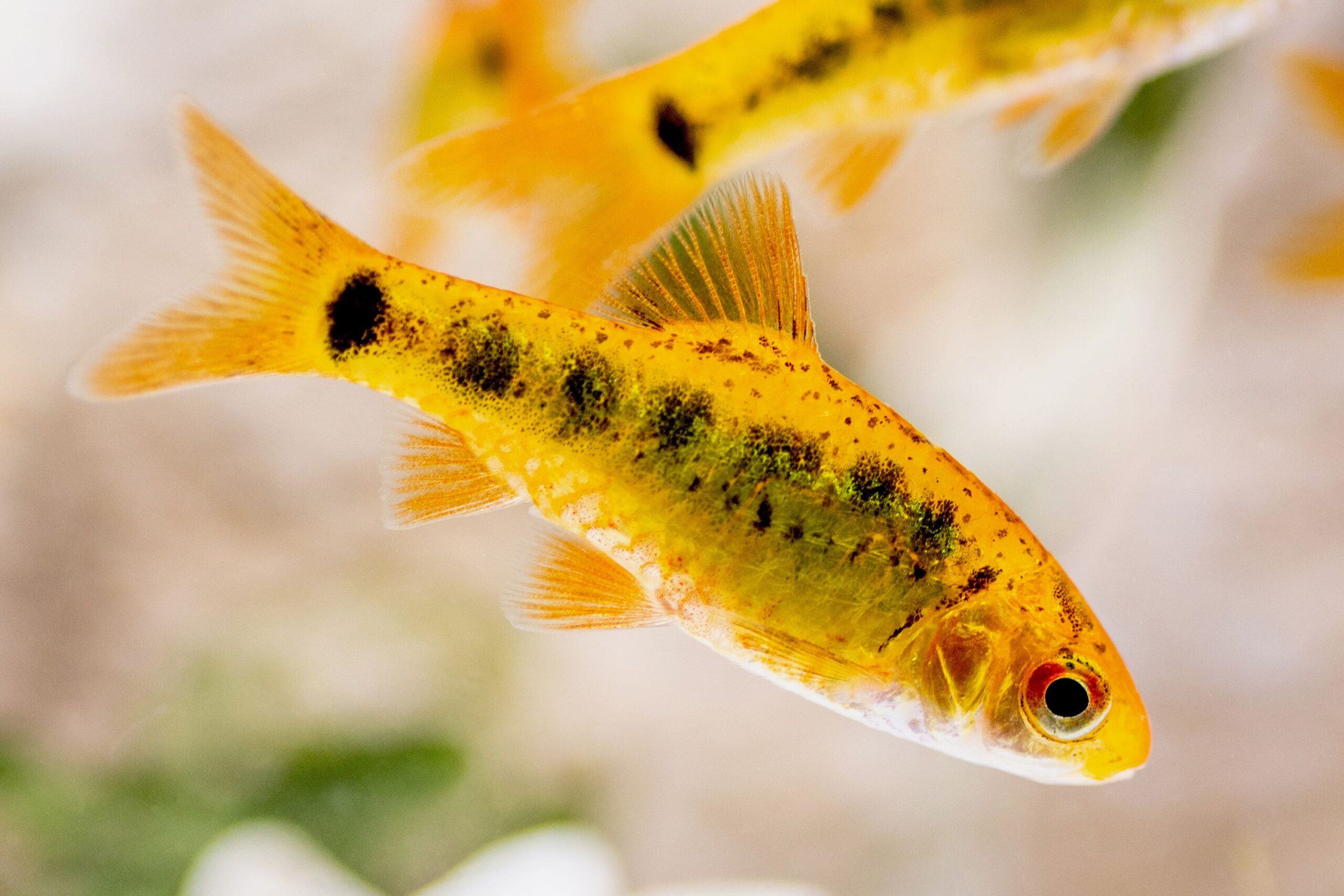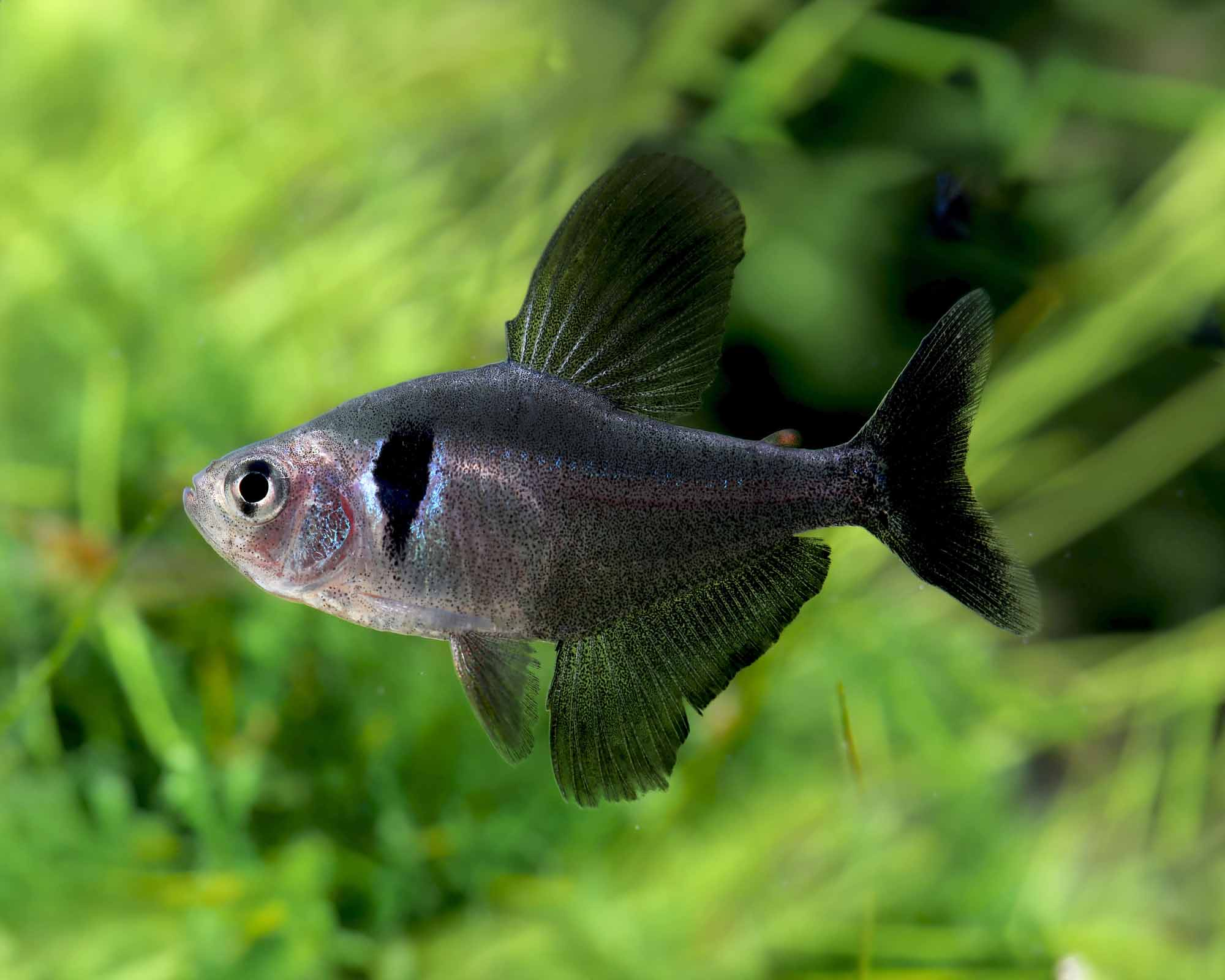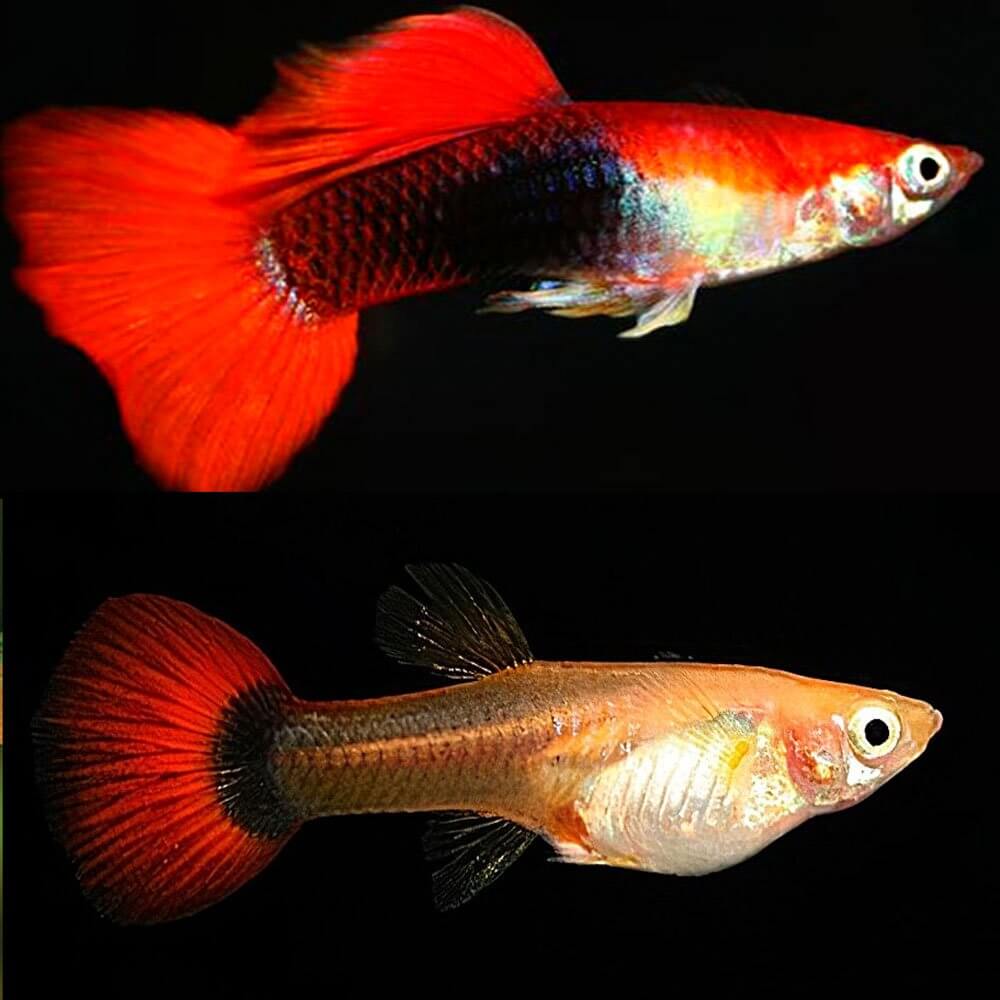The harlequin rasbora is a native of Malaysia, Singapore, Sumatra, and southern Thailand. It inhabits streams and waters that are characterized principally by their low mineral content and high concentrations of dissolved humic acids, which is typical of water that flows through swamped forests. The waterlogged soils of these forests inhibit the complete decay of leaf litter, resulting in the formation of peat, which leaches humic acids. These conditions resemble those found in the blackwater habitats of South America.
Colors and Markings
Of the more than five dozen species of rasbora, the harlequin is arguably the most popular of them all. Often referred to as a red rasbora, the body is a reddish-copper color that is accented by a striking black wedge covering the rear half of the body. The distinguishing triangular patch begins near the dorsal fin and comes to a point near the base of the caudal fin.
This species looks similar to the Pork Chop or Lamb Chop Rasbora (T. espei). and the Narrow Wedge Rasbora (T. hengeli), and Somphong’s Rasbora (T. somphongsi), and these fish species can be differentiated primarily by the size of the dark “wedge.” These species of rasboras are listed from largest to smallest triangular patch.
Tankmates
The harlequin rasbora is a shoaling fish; it should be kept in schools of eight to 10 individuals. Schools of even larger numbers make for a beautiful display. You can keep harlequins with any fish as long it’s not large and predatory. It will not nip at or quarrel with any other species. Some potentially good tankmates may include cardinal tetras, one betta, neon tetras, small barbs, dwarf gouramis, danios, other small rasboras, and corycatfish.
Harlequin Rasbora Habitat and Care
Rasboras are a true freshwater family of fish and are never seen in brackish waters. They prefer the lowland waters of southeastern Asia, where the water is soft and acidic. Harlequins prefer an environment with areas of dense vegetation, an open area for swimming, a dark substrate, and subdued lighting.
An aquarium intended to house harlequin rasboras should be planted with live plants. Create open areas for swimming between stands of plants such as Cryptocoryne species, these being among the plants that inhabit the harlequin rasbora’s native waters.
Harlequin Rasbora Diet and Feeding
Harlequins readily accept all foods but prefer to eat live foods whenever possible. In nature, their diet consists primarily of insects. However, they will accept frozen foods and freeze-dried foods as well as flake foods. A varied diet will ensure that digestive problems or susceptibility to disease do not occur. Brine shrimp, daphnia, and any type of worm are excellent supplemental foods, particularly when conditioning before breeding.




Reviews
There are no reviews yet.